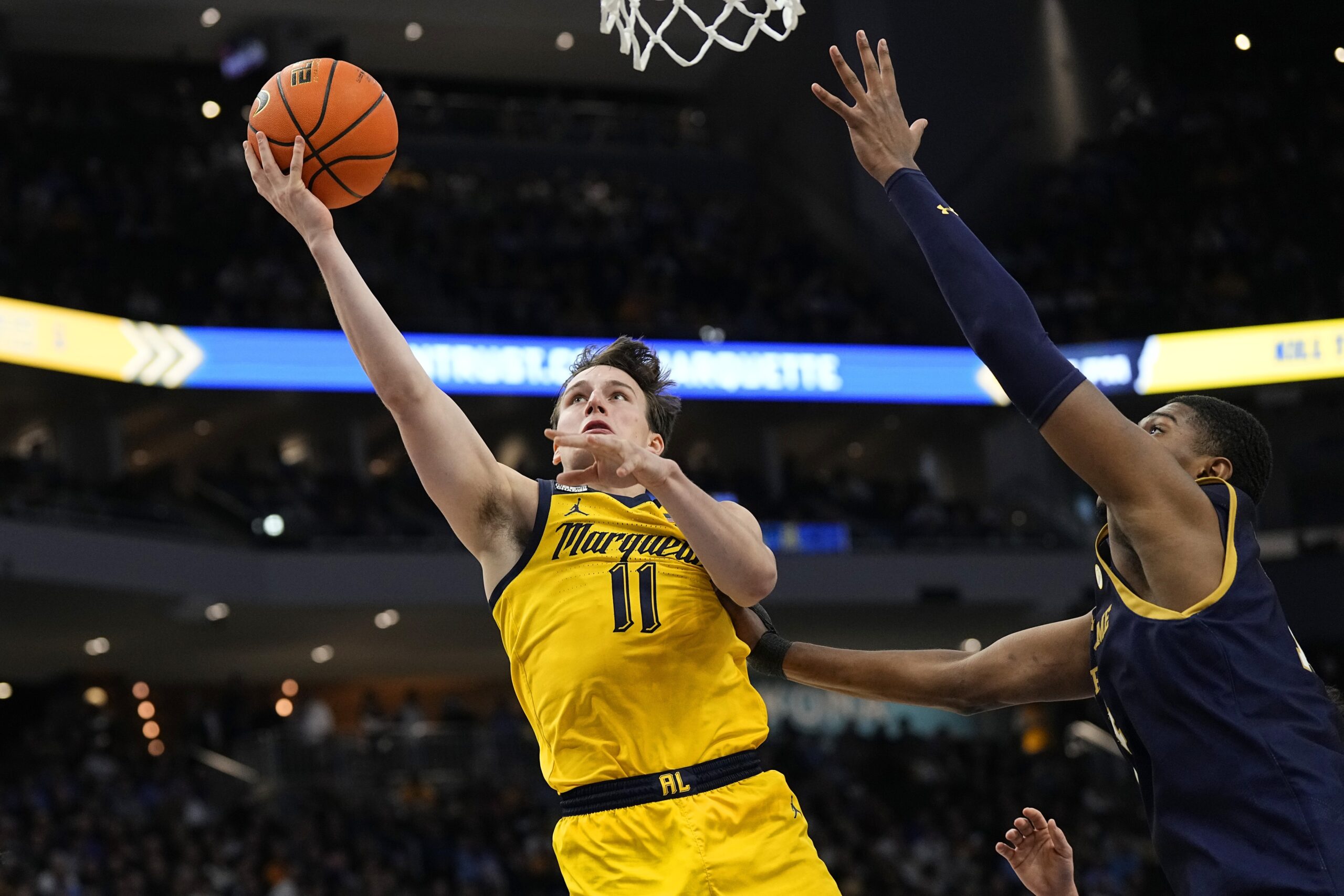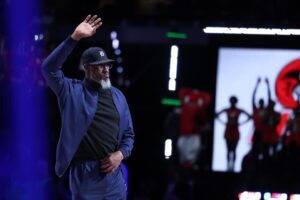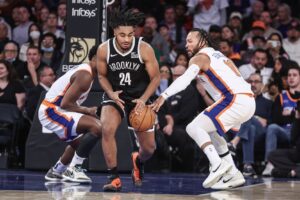A month into the NCAA season, we have only seen a hint of what some teams are capable of, especially for the teams with new rosters (which feel like all of college basketball), notably St. John’s, UNC, and Gonzaga. It is tough now, and will still be incredibly hard on Selection Sunday to predict the NCAA’s Final Four. Only about 1 in 600,000 brackets forecasted the Final Four correctly this past tournament. Nonetheless, I will repudiate myself and try to predict the unpredictable.
Way Too Early NCAA Final Four Predictions
Marquette Golden Eagles
Marquette has the best guard in the country in Tyler Kolek, one of the most underappreciated players in Kameron Jones, and a big man everyone on the team seems to gel with, Oso Ighodaro. They may not be one of the deepest teams, but that three-man connection is something else. Jones and Ighodaro specifically have a fluid pass/screen system that is almost flawless, allowing Jones to move around the perimeter with Ighodaro shadowing him in the post. Marquette also runs an empty side ball screen. It starts with Jones or Kolek with the ball on the wing with Ighodaro setting an inside screen. The remaining three players are all cleared out to the opposite side, permitting the speedy Jones and Kolek to whip around the pick and either lay it in or give it to the rolling Ighodaro.
Coach Shaka Smart utilizes Ighodaro wisely and effectively, which benefits everyone on the court. This is also a very seasoned Marquette squad, with the only noticeable departure being Olivier-Maxence Prosper to the NBA. This is a team that knows how to play together – and, most importantly – knows their strengths and weaknesses. The team chemistry is at an all-time high in Milwaukee.
Also, 2023 Big Easy Sixth Man of the Year David Joplin is another reason to like the Golden Eagles. He is Smart’s “Swiss army knife.” He can shoot, rebound, defend, and has the second-highest plus/minus on the team.
Marquette racks up about nine steals per game, good for second in the Big East behind Seton Hall. Kolek, Jones, Joplin, and Chase Ross all average at least 1.0 SPG, and none are the primary defenders. Stevie Mitchell is the one who takes on the most difficult matchups most nights. They are one of the most versatile teams defensively and should be regarded as such. They have faced the seventh hardest schedule this season, facing Purdue, Kansas, and Texas all within the first month. However, they have not really faltered, giving up an average of 64 PPG over a three-game stretch against Illinois, Kansas, and UCLA – a respectable number considering the offensive firepower they faced. It is Marquette’s title to lose – they are that good. If their tandem of Ighodaro, Kolek, and Jones stays healthy, they could make the Final Four and be cutting down the nets in Glendale.
Creighton Blue Jays
If there is one thing to take away from this Creighton team, they have the best offense in the NCAA. They somehow returned their three top scorers: Player of the Year candidate Ryan Kalkbrenner, Trey Alexander, and Baylor Scheierman. Scheierman is having a breakout season, averaging 18.6 PPG, 7.3 RPG, and 4.0 APG while drilling nearly four threes a game. Alexander and Kalkbrenner have picked up right where they left off, leading the Blue Jays to a 7-1 record thus far. This includes impressive wins over Iowa and Nebraska. Their only loss came against an exceptional Colorado State team when they put up 48 points. Their next lowest-scoring performance? 79 against Oklahoma State.
Creighton shoots the ball at a crazy clip from beyond the arc, with 50% of their shots coming from three. They only hit 39%, but are second in the country in made threes with 98. Contributing to this influx is senior transfer, Steven Ashworth. He is shooting the most efficiently from downtown on the team at 41.3%. He has NBA range and is deadly off of the catch-and-shoot. Teams play Creighton by collapsing on Kalkbrenner whenever he gets the ball down low. He then can kick it out to Alexander, Scheierman, and now Ashworth. How can you guard all three while keeping bodies on Kalkbrenner? Short answer: you can’t.
Finally, Greg McDermott might be the one who wants the title the most. He has never made the Final Four in his 12 years as Creighton’s head coach. This year, the stars are aligned for Creighton to make a deep run to the Final Four.
Purdue Boilermakers
Remember when Virginia lost to UMBC in the first round of 2018 March Madness? Do you also remember when that same Virginia team was cutting down the nets the following year?
Purdue’s loss to Farleigh Dickinson last year was hard to swallow for the Boilermakers – especially head coach Matt Painter. The loss “just eats at him.” This feeling hit Virginia coach Tony Bennett after the UMBC loss but did not cause him to lose faith. Virginia kept most of the 2018 tournament team, only bringing one transfer. Purdue has taken a similar approach, bringing in solo transferee Lance Jones. Painter finds no reason to “start fresh” or bring in a star guy. They have the pieces. When speaking about the FDU loss in September, Painter clarified his mindset: “What it gets you to do is think that you have to change a lot when in reality you don’t.” This is the same mindset Bennett retained – and look how it worked out for him.
Zach Edey is making a case for back-to-back Naismith Player of the Year, while Braden Smith is having a year of his own. Purdue has underrated talent like true freshman Myles Colvin, shooter Mason Gillis, and potential Edey successor Trey Kaufman-Renn. There is a reason Purdue is first in roster rank, according to EvanMiya.com.
With wins over Tennessee, Gonzaga, Marquette, and Alabama, Purdue should not be judged by one loss from last year. There is no “weak link” or “missing puzzle piece” on the team. I think the missing puzzle piece was the loss to FDU. It gave them a story to tell and a new story: reprisal.
BYU Cougars
Wait, BYU is good at basketball? Yep. In fact, they are a top-ten team in terms of efficiency, according to KenPom. They lead the nation in bench points with 326, mainly due to their top scorer, Jaxon Robinson, being the sixth man. They are first in 3PM per game, second in APG, and fourth in PPG. Score and score often is the mantra of head coach Mark Pope.
Senior guard Trevin Knell leads the Big 12 in 3P%, while Robinson is a natural scorer and solid wing defender who shows hints of Reggie Bullock. The love is shared down the BYU roster, with seven players averaging nine or more PPG. They also project as the second-best rebounding team in the country behind Arizona. Once again, the stats divide among about eight players who grab three or more rebounds a game. There is no better way to win games when you have at least five reliable guys who can get the job done. The balance of the BYU roster is unbelievable. They are not too senior or freshman-heavy. Pope found a way to assemble a roster without taking full advantage of the new transfer portal/eligibility system. This should not be taken lightly; we must appreciate Pope’s understanding of the ever-changing NCAA sports scene.
The added challenge of it being their first year in the Big 12 has not halted their production either. They were picked to finish 13/14 teams coming off a 19-15 season. Pope recognized the hardships he would face in his first year, especially in the recruiting end. In March, he said, “The NIL money is real. It’s just a real part of this. It is not the end-all, be-all. [But] there were some programs last year who were really successful in buying teams, right? So that is a real part of this process.” It seems like BYU has adjusted very well to the new landscape of the Big 12.
BYU lost to Utah on Saturday in a game where they shot 7-30 from three. That’s not ideal, but it’s nothing to worry about. It was an intense away rivalry game when the tensions were high – so maybe they have an excuse. If BYU can win out their non-conference schedule and be solid through the gauntlet of Big 12 play, they have a chance to do something special and make the Final Four.






